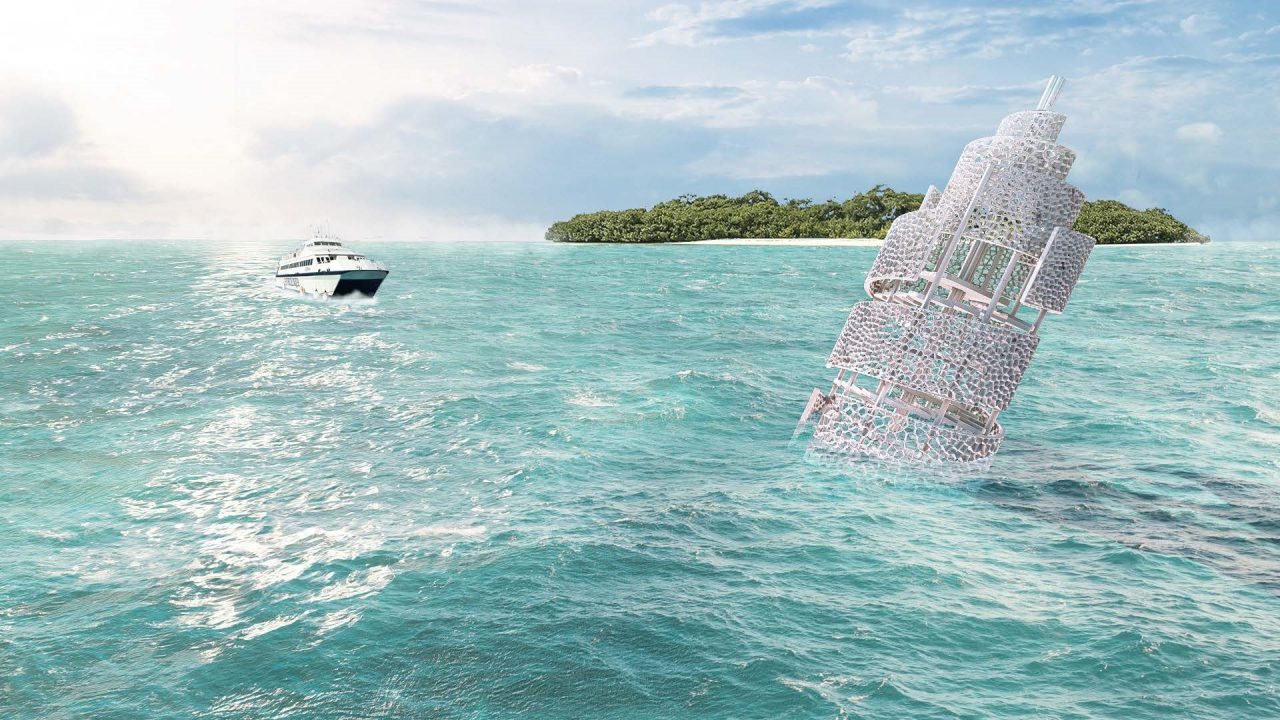Architecture Students Win Museum of Outdoor Arts Competition

Fifth year architecture students Tanmay Shetty and Daniel Mejia were awarded first place in the Museum of Outdoor Arts’ (MOA) 2022 Design and Build Competition. The Englewood, Colorado, museum hosts this annual competition for undergraduate students from a variety of design-based disciplines. The theme of the 2022 competition was “Sanctuary Continental,” and the challenge was to design a sanctuary or pavilion-like structure. Entrants were asked to create a design for a specific location utilizing local materials to create a solution to an environmental issue.
Shetty and Mejia’s submission, entitled “Resurgence,” was created as a sanctuary for marine life as well as a visual reminder of the consequences of inaction in response to climate change. The competition required that the structure be constructed primarily of local materials and that it be accessible and useful for the general public. Shetty and Mejia chose to focus on the Maldives, an island nation in the Indian Ocean that is in danger of losing its protective coral reefs and is at risk of literally disappearing as sea levels rise. Their design included a structural frame made from recycled steel rebar with a low voltage power source attached. The creation of an electrical voltage on steel changes the pH of the water around it and spurs the natural formation of Biorock™, which supports the steel (similar to reinforced concrete structures) and protects it from rusting while providing the perfect place for rapid coral growth. That coral would provide a habitat for marine life and would also be utilized as a scuba diving location for tourists. The top of the design, rising almost 12 meters above sea level, would be visible from shore and would serve as a call for collaboration in combatting the harmful effects of climate change.
Shetty said that the work they put into their entry made for the perfect summer project. “Daniel and I had been talking about collaborating for a long time but never could until we found the MOA design build competition,” he said. “We read the brief and found it simple yet compelling. The brief hinted at a design that also has an environmental impact, which gave us the opportunity to research and learn from it.” Shetty and Mejia’s design had a dual purpose, acting as both a cultural and an ecological sanctuary.
While their design has yet to be built, their success in the competition has led to interesting possibilities in their futures. “The museum reached out and encouraged us to keep researching the material as it hasn’t been used in construction before,” Shetty said. “That led to us having a meeting with Dr. Thomas Goreau, a renowned biogeochemist and marine biologist who holds the patents to Biorock™ and has many environmental projects going on around the globe.”
Shetty and Mejia are about to graduate from Auburn this coming May. While their careers may take them to different places, they are hoping to work together again in the future and will continue researching the use of Biorock™ as an environmentally friendly construction material whenever they have time. Mejia doesn’t know when that might be, but it hasn’t kept him from thinking big. “If we could figure out how to use it architecturally, standardize it and then mass produce it, we would revolutionize the whole construction industry,” he stated.